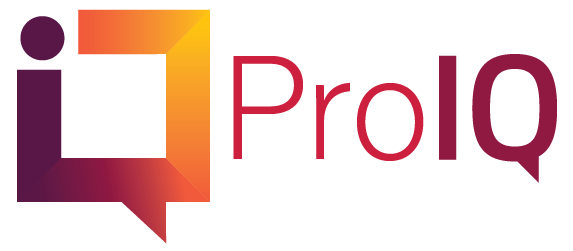From sifting through numerous profiles and doing digital detective work to being ghosted, recruitment is a modern-day dating game. And in both realms, mistakes can and do happen.
One of the biggest blunders both employers and people make is stopping the seduction. The selling should never end. That’s where a strong recruitment marketing plan comes into play.
Effective recruitment marketing strategies demonstrate why your company is the employer of choice, improve candidate experience, and quickly weed out the princes/princesses from the frogs.
What Is a Recruitment Marketing Plan?
A recruitment marketing plan is a strategic approach that combines marketing techniques with recruitment efforts to attract, engage, and retain top talent. It showcases a business’s culture, values, and job opportunities in a way that resonates with potential candidates.
And just like continually wooing a romantic partner, recruitment marketing creates a consistent stream of compelling content to encourage the right candidates to apply for open positions.
Effective talent acquisition marketing tactics benefit companies in numerous ways, including:
- Enhancing employer brand
- Engaging a wider talent pool
- Improving candidate quality
- Reducing recruitment costs
- Accelerating hiring
- Ensuring hiring funnel optimization
Like dating, developing a robust recruitment marketing strategy can seem daunting. But with some time and patience, you can successfully create a plan that fills your pipeline with top-tier talent.
Here’s how to create a recruitment marketing plan that romances the high-quality candidates you’re looking for.
6 Key Elements of a Recruitment Marketing Plan
Crafting an effective recruitment marketing plan involves six key elements that, when implemented correctly, can elevate your hiring efforts:
1. Define Objectives and KPIs
The first step to developing a successful marketing plan is identifying your objectives.
What do you hope to achieve with your recruitment efforts? Are you aiming to fill specific roles, improve your employer brand, or increase the diversity of your candidate pool?
Your objectives should be specific, measurable, achievable, relevant, and time-bound (SMART). For instance, you might aim to fill 10 engineering roles within the next quarter or improve your company's job applicant response rate by 20%.
Along with defining your objectives, it's essential to establish key performance indicators (KPIs) to measure the success of your recruitment marketing efforts.
Common KPIs include:
- Application Conversion Rate: Percentage of candidates who apply after interacting with your job ad.
- Source of Hire: Identifying which platforms or campaigns generated the most successful hires.
- Cost-Per-Hire: Total recruitment costs divided by the number of hires made.
- Time-to-Fill: The time it takes to fill a position from posting the job to hiring the candidate.
By defining clear objectives and KPIs, you create a measurable framework for tracking progress and making adjustments to improve your recruitment strategy.
2. Candidate Personas Development
To succeed in dating and recruiting, you must know who you want to attract. Developing personas can help you gain deeper insights into your target audience.
Candidate personas are semi-fictional profiles that represent ideal candidates for specific roles.
These personas are made up of many different factors, including:
- Demographics: Age, location, education, and experience level.
- Career Goals: What are they looking for in their next role? Career progression? Work-life balance? Growth opportunities?
- Pain Points: What challenges do they face in their current job or career path? How can your company help solve them?
- Values and Interests: What company culture and values would appeal to them? What do they care about in the workplace?
By understanding the needs and desires of your target candidates, you can develop more compelling job postings, improve your employer branding, and engage the right people through the right channels.
3. Choose Marketing Channels and Platforms
Once you clearly understand your objectives and ideal candidates, it's time to decide which marketing channels and platforms will best reach your audience. Numerous options are available, each with unique strengths.
Some popular platforms for recruitment marketing include:
- Job Boards: Sites like Indeed, Glassdoor, or niche industry job boards are still effective for reaching a broad audience.
- Social Media: There are many advantages to social media recruiting. LinkedIn, Instagram, and Facebook are great for sharing job opportunities, showcasing your company culture, and engaging with candidates.
- Company Website: Your career page is one of the most critical assets in your recruitment marketing strategy. Ensure it’s optimized, easy to navigate, and represents your company culture.
- Referral Programs: Employee branding and referrals can improve your business’s reputation and retention.
Choosing the proper channels will depend on the persona of the candidates you want to attract. For instance, older candidates might search for open positions on job boards, while recent college grads will scour social media sites.
4. Craft Compelling Job Descriptions and Ads
You wouldn’t swipe right on a Tinder profile with one obscure sentence, would you? Candidates don’t click “apply” on job posts that do either.
Effective job posts go beyond listing a role’s responsibilities and required qualifications. They paint a picture of what it’s like to work at your company. A strong job ad should be clear, concise, and tailored to your target candidates’ needs and motivations.
Consider these tips when crafting your job descriptions:
- Be Transparent: Provide clear information about salary, benefits, and expectations.
- Highlight Corporate Culture: Include details about your work environment, values, and perks that set your company apart.
- Use Inclusive Language: Ensure your language is welcoming and appealing to a diverse group of candidates. Always consider candidates’ gender identity, ethnicity, and ability.
- Sell the Role: Instead of listing responsibilities, describe the role's impact on the company and the growth opportunities.
- Leverage Graphics: Include videos and images to make the job post more immersive.
Focusing on the candidate's experience and how they’ll fit into your organization creates a more compelling and attractive job listing that attracts the right talent.
5. Create a Content Calendar
Consistent and engaging content is key. A content calendar helps organize and plan your recruitment efforts across different channels, ensuring you stay on track with your messaging and objectives. It also ensures that you consistently share valuable content that educates and engages your target candidates.
Here’s what you can include in your content calendar:
- Job Postings: Schedule regular updates on open positions, especially for roles that are harder to fill.
- Employer Branding Content: Share behind-the-scenes content, employee stories, company achievements, and other content that showcases your culture.
- Industry Insights: Share thought leadership articles, blog posts, or news related to your industry to position your company as a knowledge hub.
- Employee Testimonials: Highlight the experiences of current employees to attract candidates who align with your company culture.
A content calendar ensures your recruitment content marketing is consistent, on-brand, and strategically aligned with your goals.
6. Track and Measure Results
Using the KPIs you defined at the outset, continuously monitor your performance to see how well your strategies work. Are you hitting your application goals? Is your time-to-fill improving? Is your cost-per-hire in line with industry standards?
Some tools you can use for tracking and measurement include:
- Applicant Tracking Systems (ATS): These can help you track candidate progress and identify trends in hiring.
- Google Analytics: This tool monitors traffic to your career site and evaluates the effectiveness of different marketing channels.
- LinkedIn Analytics: LinkedIn provides insights into engagement rates, follower growth, and more.
Building a Plan That Drives Results
Thoughtful recruitment campaign planning can take you from the first date to the altar. Not only does it help you identify ideal candidates, but an effective recruitment marketing plan also helps you secure them.
Ready to build recruitment marketing strategies that maximize hiring ROI? Reach out to ProIQ today. Consider us your recruitment dating coach. Our specialists provide the tools and guidance to help you find your perfect match.





